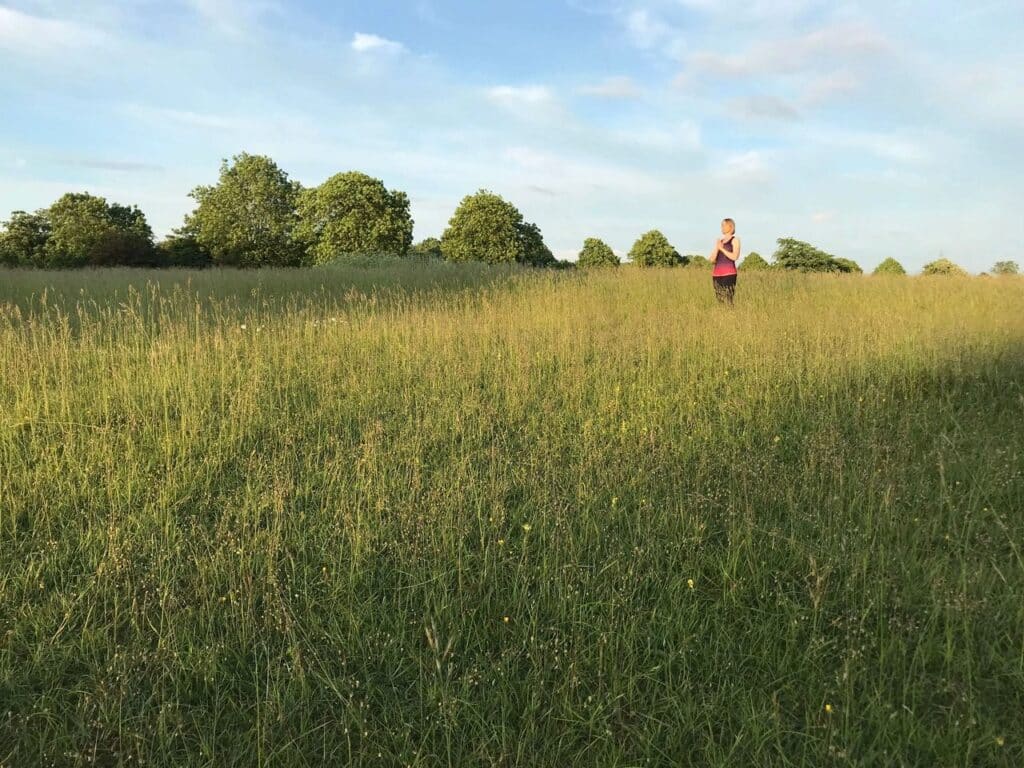A seasonal practice to create calm
Now that it’s December and it feels natural to be lighting candles and perhaps seeking a bit of calm in the manic build-up to Christmas, I thought it would be good to take a look at restorative yoga and even suggest a few poses to practise at home, particularly as many yoga studios and classes close for the season.
Yoga for calm
Restorative yoga is really helpful in our frenetic world as it encourages our bodies to surrender and relax. These supine postures, which are often supported by blocks, blankets and bolsters, are designed to maximise comfort and allow practitioners to fully let go, which is why they are typically held longer – for at least five and up to 20 minutes at a time. They are also arranged with the head below or at the same level as the heart which helps quieten the body and the brain.
To many frazzled Western yogis, minimising effort in such a way can feel counterintuitive, but there are real benefits to what may seem like doing very little.
Sympathetic vs parasympathetic
Restorative yoga primarily works to activate the parasympethic nervous system and helps us move out of a highly-charged sympathetic nervous state stuck in “fight or flight” mode.
But why are we in this state? And why are we stuck? Because unless you really have the family from hell then the Christmas season isn’t perceived as as a life threatening event. But our primal brain hasn’t caught up with our modern lifestyles and doesn’t yet have that cognitive understanding. Any stressful situation provokes the hormonal release of cortisol to a greater or lesser extent. And I don’t know about you but I certainly find the build-up to Christmas stressful. To compound issues, women in peri-to-post menopause are particularly susceptible to having high levels of cortisol, the stress hormone, and these can lead to chronic inflammation and insomnia, among other issues.
However, once in the parasympathetic, “rest and digest” mode, the heart slows and blood pressure drops. Immunity is boosted and the body’s capacity for healing is primed. All systems start to settle.
No props required
If you’ve ever attended a restorative yoga class, you’ll know that a myriad of props are employed to help you completely relax. This should not put you off trying this at home. As you’re reading this blog I’ll assume you have a yoga mat (although you don’t actually need one for any of these poses), but what if you don’t have a bolster? No matter. All we need here is a blanket. And if you don’t have one of those please treat yourself; it is Christmas after all. Keeping props to a minimum keeps fuss to a minimum. Move slowly. Enjoy.
Restorative yoga sequence
- Savasana. The ultimate restorative yoga pose. Try this with a folded up blanket over your belly, which will help you relax into the ground and keep your focus on your breathing. Alternatively if you suffer from a sore lower back you can roll up your blanket and place it underneath your knees.
- Legs up the wall. Take your blanket and place it on the floor by the wall. Sitting sideways by the wall with your bottom on the blanket, swing your legs up. Your back and shoulders should be an inch or so lower than your bottom, which is slightly elevated by resting the blanket. Let your feet relax. You can have your legs together here or let your legs fall out wide to create a v-shape.
- Fallen tree pose. Roll your blanket up and put it by your right hand side as you lie on the floor. Bend up your right knee, placing your right foot on the floor by your left knee. Then let your right knee fall out towards the floor, coming to rest on the blanket. Repeat on the other side.
- Child’s pose. Rest over your rolled up blanket for comfort. If you happen to have a bolster, even better.
During these postures observe your breath in order to help you be present and relax but avoid controlling it, which can in turn create tension. Unlike in some yoga styles breathing is not an activity we need to accomplish here. It is simply a process we allow to happen.
Give yourself as much time as possible in each pose – try for at least five minutes. And if ten minutes is all you have, just do your favourite pose. Even that will recharge your batteries and bring you to a state of physical and mental calm. The added bonus is that with this re-boot you’ll find yourself super efficient and whipping through that to-do list in no time. Which is really what we all need during the season of Joy!
And then if you want to resort to a mince pie and some mulled wine, that is entirely your prerogative.


